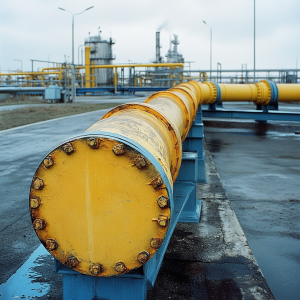- August 28, 2024
- Posted by: Velosi Author
- Categories: Asset Integrity, Insights

Introduction
Pipelines are mainly involved in the transportation of crude oil, natural gas, and refined products over long distances from production sites to refineries, storage facilities, and end-users. In addition to safety, effectiveness, and aspects of the physical surroundings within this industry must always be protected. Pipeline defect management is thus an important practice intended to identify the likely problems that can lead to the failure of those crucial structures. The authors in this paper provide a nearly comprehensible and detailed explanation of the aspects of pipeline defect management as well as its relevance to the oil and gas industry.
Understanding Pipeline Defects
Pipeline defects can be categorized into various origins including; Material defects, Manufactured defects, and Operational defects. Common types of defects include:
The general defects that may be found are:
- Corrosion: This refers to the gradual wearing away of metal with the environment that results in the leaching of some of the metallic feints.
- Cracks: Stress, fatigue, and shocks that may lead to micro-cracking on the pipeline material that is experienced.
- Dents: Irregularities caused by steam pressure, mechanical force, mechanical shock, and so on.
- Weld Defects: Conditions that are likely to affect the weld joint that may cause characteristics such as porosity, cracking, or lack of fusion.
Each of these types of defects is characterized differently as well as having different causes and hence, their management focuses on the practicable methods of handling the risks that are inherent in them.
Pipeline Defect Management
Pipeline defect management deals with the identification, assessment, and reduction of risks linked with pipeline defects. An effective defect management process provides the following benefits:
- Risk Reduction: Completely closes any possibilities of leakage; cracks or any other failure that can lead to an accident that is dangerous to the environment.
- Cost Effectiveness: Reduces costs because it eliminates instances that would require resources on time that would have been used to treat defects that may have prevailed on the products such as machines that may have developed some faults.
- Regulatory Compliance: Ensures adherence to industry standards and regulations, preventing overall illegal and financial penalties.
Key Components of Pipeline Defect Management
- Inspection and Monitoring Techniques:
o In-Line Inspection (ILI) Tools: This includes smart pigs and other instruments that flow through the pipeline to inspect defects.
o Non-Destructive Testing (NDT): The performance or efficiency of a pipeline can indeed be evaluated using ultrasonic examination, or radiography and magnetic particle inspection.
- Real-Time Monitoring Mechanism: It is the sensor and the data analysis tool witnessing the state of the pipeline conditions and their position when the possibilities of an issue are said to be on the alert 24/7.
Defect Assessment and Analysis Approach:
- Data Collection and Interpretation: Information gathered from inspections is analyzed to locate, measure, and evaluate defects.
- Risk Assessment Methodologies: Assessing the potential impact of defects on pipeline integrity and prioritizing repairs based on risk levels.
- Maintenance and Repair Strategies:
- Efficient Repairs: Focusing on critical defects that pose the highest risks.
- Repair Methodology: Methods such as welding, coating, composite repair, and pipeline replacement to address identified defects.
Pipeline Integrity Management with Defect Management Software
Pipeline Integrity Management (PIM) is e a systematic approach that incorporates the essentials required for the integrity of pipelines to make them safe, efficient, and reliable. Integrating defect management software into this approach brings several advantages.
Integrating Velosi’s defect management software into this approach sets forth the following advantages:
- Comprehensive Data Integration:
- Centralized Database: Defect management software captures information from independent sources as well as from inspectors, maintenance checklists, and current monitoring systems and stores the data in one database.
- Enhanced Data Analysis: Some of the functionalities in the software include handling big data sets and drawing out patterns, probable failure, and further actions to prevent the failure.
- Enhanced Risk Assessment and Decision-Making:
- Risk-Based Analysis: The software effectively performs risk-based analysis by sorting out the defects according to their criticality and subsequent effect on the pipelines. This assists in the endeavor of involving the right priorities in the right locations for repairs.
- Predictive Maintenance: Thereby, it can predict problems before they escalate to the critical stage thus helping to prevent system failure due to negligence on the required maintenance.
- Efficient Compliance Management:
- Regulatory Adherence: The software ensures that all the functions on the pipeline operations meet the set standards, API 1160 and ASME B31. 8S. This one assists in generating documentation and reporting to support conformity to relevant authorities.
- Audit Readiness: Since all the data and the compliance records are maintained in the electronic format, there are relevantly no issues in preparing for audit and inspection, etc.
- Streamlined Maintenance and Repair Processes:
- Automated Scheduling: Concerning the convenience of the software it can apply to the scheduling of inspections and maintenance activities and exclude the possibility of missing some significant work.
- Resource Optimization: When organizing repairs, companies must take into account various risks and, thus, effectively manage the resources with an emphasis on the most important ones.
Regulatory and Compliance Considerations
Compliance with industry standards and regulations is critical in pipeline defect management.
Relevant guidelines include:
API 1160: Focuses on managing pipeline integrity for hazardous liquids.
API 580/581: Focuses on the risk-based inspection criteria within the pipeline operations.
ASME B31.8S: Provides guidelines for managing gas pipeline integrity.
Adhering to these standards ensures that pipelines operate safely and efficiently while meeting legal requirements.
Challenges in Pipeline Defect Management
Implementing effective pipeline defect management can be challenging due to:
- High Initial Costs: Investment in advanced inspection tools and technologies can be substantial.
- Training Requirements: Ensuring that personnel are skilled in using new technologies and interpreting data.
- Integration Process: Seamlessly incorporating new systems with existing infrastructure.
Future Innovations in Pipeline Defect Management
Emerging technologies are set to shape the future of pipeline defect management:
- Introducing Artificial Intelligence (AI): Enhances predictive analytics and automated decision-making.
- Advanced Machine Learning: Enhances defect detection and risk assessment accuracy.
- Internet of Things (IoT): helps in keeping an eye on things and sharing information between linked sources. This new technology improves how we handle pipeline flaws. It makes it quicker and works better, increasing safety, dependability, and how well it runs.
Conclusion
Pipeline defect management is essential for ensuring the integrity and safety of pipelines in the oil and gas industry. By imposing advanced technologies, compliance with regulatory standards, and implementing effective inspection and repair strategies, organizations can mitigate risks, reduce costs, and enhance operational efficiency. Integrating Velosi’s defect management software into pipeline integrity management offers a full-on and pre-emptive way to keep pipelines safe and reliable. Spending on good problem-tracking software shields assets and boosts lasting operations.
Stay connected for more blogs!
Please contact us for more information and assistance.




